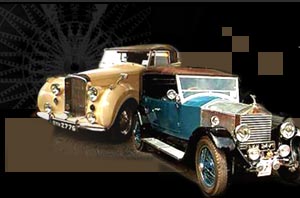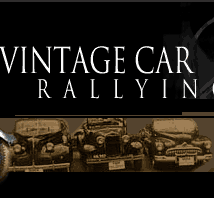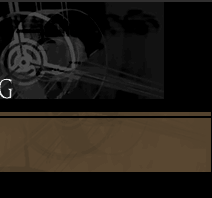 |
 |
 |
|
|
|
|||||||
|
||||||||
|
August 1, 2001
news |
Anubha CharanHalf a decade or so ago, it seems that someone suddenly noticed that old cars had wheels. Wheels that could carry them out into the world and turn back the clock. There was suddenly more to old cars than their acquisition and display. Vintage and classic cars were meant to be driven! And driven they were - in a steadily growing profusion of road rallies. Leading to the recognition of historic car rallying as an international sport, probably the only one that is popular across every geographical and demographic border. This sporting movement achieved its first milestone with the birth of FIVA, or the Federation Internationale de Vehicules Anciens. Founded on March 1, 1966, in France, as an international federation of historic vehicle clubs, predominantly catering to historic "self-propelled road vehicles" of all kinds, FIVA became the only international organisation concerned with vintage and classic automobiles to be recognized by UNESCO.
A non-profit making organization, FIVA also co-operates with two other large international road vehicle federations - FIA (Federation Internationale de l'Automobile) for modern automobiles and FIM (Federation Internationale Motorcycliste) for motorcycles. Today, FIVA comprises of 53 associations in 36 countries, appointing the most representative club or federation in each country as its national representative called "ANF" (FIVA National Authority). The ANF, in addition to representing the nation with respect to FIVA, that is, carrying the national votes at FIVA's General Assembly, is also in charge of issuing FIVA Identity Cards to eligible vehicles and of controlling FIVA events in the country. To this end, FIVA appointed the Vintage and Classic Car Club of India (VCCCI) as its ANF in India. Formed in 1984, this Mumbai-based club is headed by Pranlal Bhogilal as president and Nitin Dossa as the honorary secretary. "All owners of vintage and classic cars," explains Nitin Dossa, "are eligible to become members." The VCCCI helps members in restoration of their vehicles and in sourcing spares. It also has a library from where members can source books on vintage cars.
The first cars to come to India were imported by a Parsi businessman, followed by the Nizam of Hyderabad and the Maharaja of Cooch Behar, in the 1890s. According to observations made by FIVA during their first visit to India in April 2001, the Indian world of historic cars in "inverted" compared to that of Europe in the sense that the latter consists of more than 75 per cent of post-war cars and less than a quarter of pre-war cars. In India, on the other hand, the majority of historical vehicles are pre-War or just post-War, and only a very small minority of cars of the period between 1953-70 are found at events. This is because during this period, the import of cars was prohibited and cars of the period are very rare indeed. It is no surprise then, that India has become a site for much international focus, as evidenced by the turnout for the country's two biggest rallies - the Rally of the Raj and the Jewel of India. The Jewel of India, born in January 1999 from the Gateway of India, is an annual feature organized by the UK-based Rhythms Of A Road Rally Ltd. (ROARR), and hosted by the VCCCI, attracting participants from all over the world. It is, however, the Rally of the Raj, which is the country's stellar milestone. Though the first car rally in the country was held around 80 years ago in the late 1920s, it was only with VCCCI's introduction of the bi-annual event in February 2000, that a FIVA 'A' event came to India. The Rally was the country's first international vintage and classic car rally, attracting more than 20 participants from as far as UK and Mexico to complete the 2,300 km road-run across Delhi, Agra, Jaipur, Jodhpur, Udaipur, Ahmedabad, Rajpipla and Mumbai. Which brings us to the question of what exactly is a rally? Although all manner of events are run under the umbrella title of "rallies", the most popular ones under the competitive sports banner are Time-Distance-Speed (TSD) road rallies in which the route instructions have assigned speeds and teams are scored based on their ability to maintain these speeds over public roads. FIVA rallies are such events where average speeds do not exceed 50 kmph.
Scoring is based on time. Rally-teams receive penalty points based on each second their time on each leg differs from the perfect time computed for that leg. At the end of each stage, a vehicle's score is multiplied by its age factor, and the team with the lowest total score is the winner. Sounds simple enough, doesn't it? In practice, however, TSD rallies are the supreme test of map reading, navigation and time keeping. A fact that only adds to the passion of the sport for the millions of rallyists from all walks of life - from clerks to bankers, tradesmen to businessmen, royalty to surgeons who dedicate every day, every weekend to their hobby of preserving, maintaining and driving all types of historic vehicles. Some spend small fortunes to have their cars restored, while others devote enormous amounts of time and energy to carry out the rebuilding work themselves. And as government regulations continue to engineer much of the character out of modern cars, as our roads become more congested and dangerous and the air we breathe gets more contaminated, more and more people are turning to historic car rallying, to the nostalgia of glory days and the marvelous machines which rode through them, fixing in our cultural consciousness a picture of the ideal motors - the vintage and classic cars.
Design: Lynette Menezes
|
|
Mail Sports Editor
|
|
|
ASTROLOGY | BROADBAND | CONTESTS | E-CARDS | ROMANCE | WOMEN | WEDDING SHOPPING | BOOKS | MUSIC | HOMEPAGES | FREE EMAIL| MESSENGER | FEEDBACK |
|